LuxioHome
Welcome to Luxiohome — where your dream space becomes reality.
LuxioHome
Welcome to Luxiohome — where your dream space becomes reality.

Discover green thumb trends with Sustainable Landscaping Ideas to transform your garden into an eco-friendly oasis. Embrace nature's beauty sustainably!

In today’s world, caring for our planet is more important than ever. Sustainable landscaping is a key way to make our gardens eco-friendly. By using green gardening methods, we can make our outdoor spaces beautiful and help the environment.
These garden trends help save resources, support wildlife, and work with nature. By doing this, we create spaces that are good for both us and the planet. These spaces are not just beautiful but also healthy for us.
Sustainable landscaping makes outdoor spaces beautiful and good for the environment. It uses natural things and tries to harm the ecosystem less. By doing this, people can help the planet by choosing native plants, using fewer chemicals, and saving water.
Sustainable landscaping is about caring for the environment while still enjoying your outdoor space. It uses plants that grow well locally, which helps nature and needs less care. This way, gardeners can make their gardens healthier for the planet.
Knowing how to care for the environment in landscaping is key for a green future. By using less water and fewer chemicals, we help the planet. These actions make gardens stronger against climate change, showing the good of green practices.
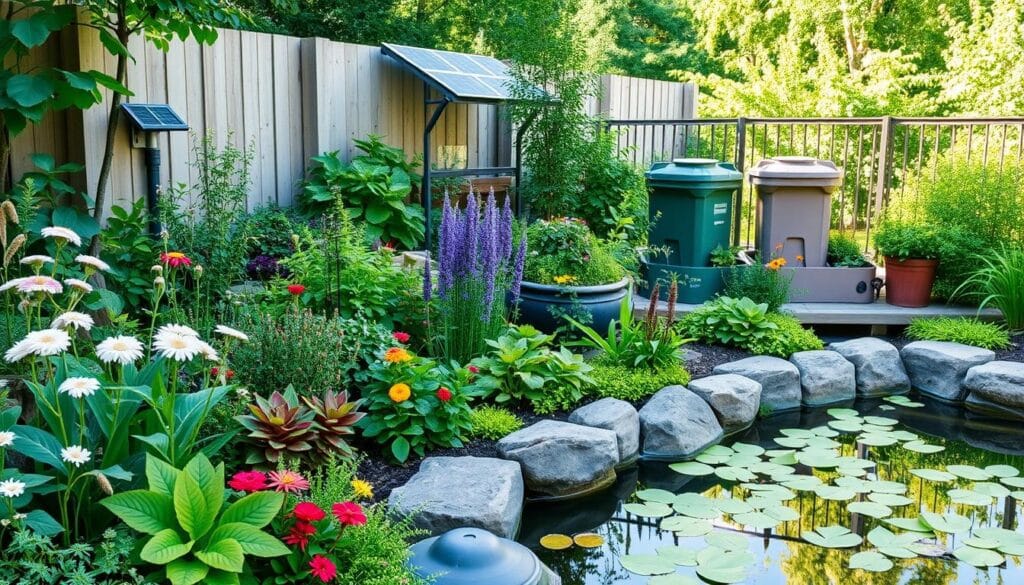
Creating eco-friendly gardens means adding key elements that help the planet and make outdoor spaces beautiful. Native plants and smart water use are two main parts. They help make gardens lively and easy to care for, supporting local nature.
Native plants bring big benefits to eco-friendly gardens. They fit well with local weather, needing less water and food than other plants. They also draw in helpful animals like bees and butterflies.
This natural draw cuts down on the need for harmful chemicals. It also boosts the variety of life in your garden.
Water-saving methods are key for green gardens. Rain gardens and xeriscaping use less water and handle stormwater well. Rain gardens soak up rainwater, letting it soak into the ground.
Xeriscaping uses plants that don’t need much water. These choices make gardens strong and kind to the environment.
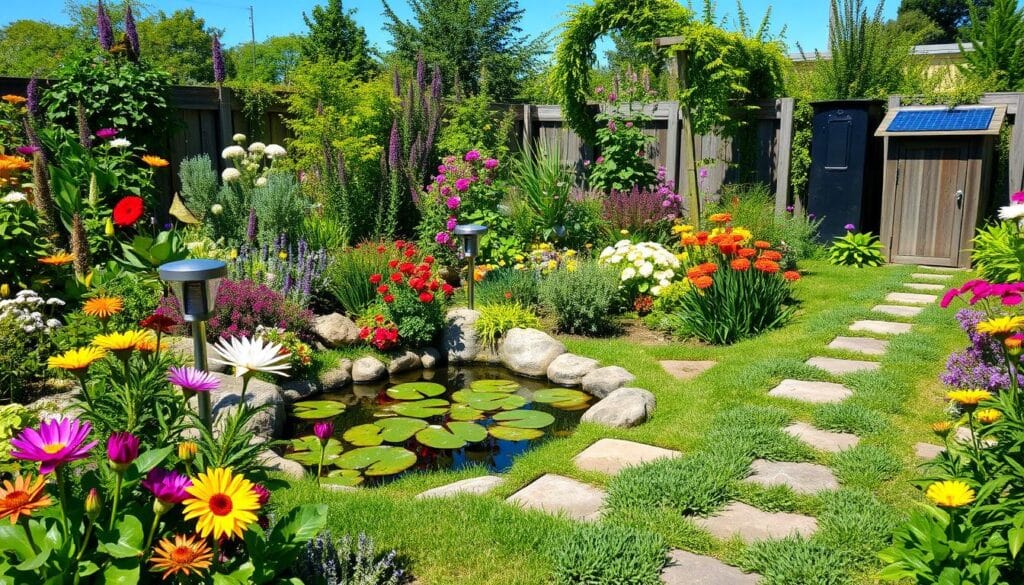
More people are looking for eco-friendly ways to beautify their outdoor spaces. Creative landscaping ideas like vertical gardens and composting are gaining popularity. These methods not only make gardens look good but also help the environment.
Vertical gardens are perfect for small spaces. They use walls and structures for plants, saving ground area. These gardens can hold many types of plants, improving air quality and supporting wildlife.
They add beauty and function to your garden. Adding herbs, flowers, and veggies makes your garden more vibrant and useful.
Composting is key for recycling garden waste. It turns kitchen scraps and yard waste into compost, making soil better. This method cuts down on the need for chemical fertilizers.
It makes your garden healthier and more sustainable. Composting is easy and helps manage waste. It’s great for growing strong plants.
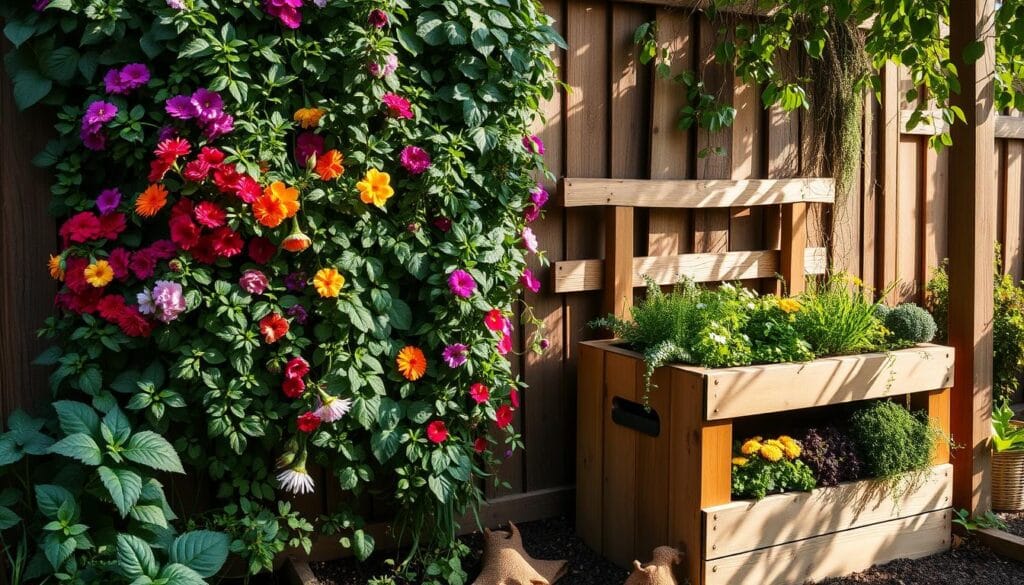
Adding renewable resources to your landscaping makes your outdoor areas more sustainable. Using solar-powered features and recycled materials lets you create unique, eco-friendly gardens. These choices not only cut down on energy use but also show off your creativity.
Solar-powered lights are great for lighting up paths and showing off your garden’s design. They use sunlight during the day and shine brightly at night. You can find:
These solar options help make your garden more eco-friendly. They save on energy costs and reduce carbon emissions.
Choosing recycled materials for your garden’s hard features is smart. It cuts down on waste and adds a unique touch. You can use:
These materials help reduce landfill waste. They also make your garden look great and support sustainable living.
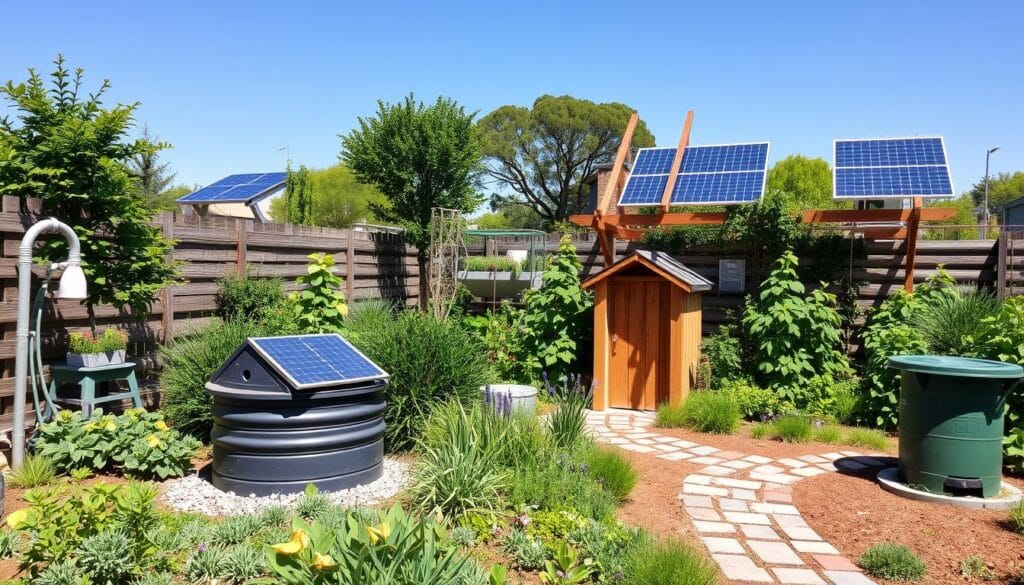
Sustainable design trends are changing, focusing on gardens that are both beautiful and good for the planet. These gardens support pollinators and local wildlife. They help keep our ecosystem balanced and diverse.
Creating spaces for pollinators means choosing plants that bees, butterflies, and hummingbirds love. Native flowers like coneflowers, milkweed, and sunflowers are great. They offer food and a place to live.
Features like:
These designs make gardens lively and protect important species.
Building wildlife habitats in gardens is also key. Native plants are essential, offering food and shelter. Some ways to do this include:
This creates a beautiful space that supports a rich ecosystem. Gardeners play a big role in improving wildlife habitats.
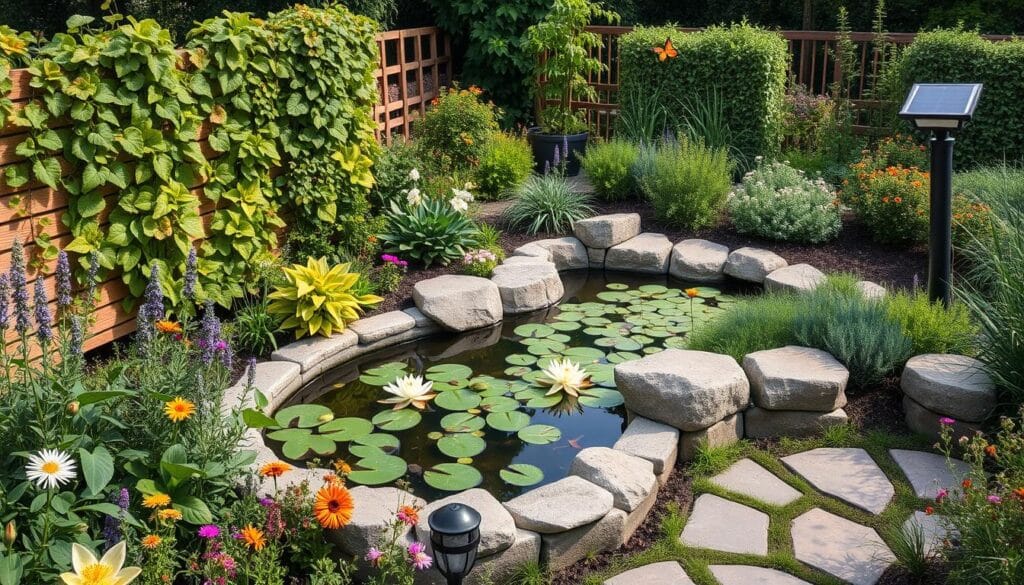
Sustainable landscaping makes our gardens look great and helps the environment. Using native plants and saving water are key. These actions help our ecosystem and support biodiversity.
More people are getting into sustainable gardening. This shows our choices can make a big difference. By following green practices, we help keep nature beautiful for future generations.
Choosing sustainable landscaping is more than a trend. It’s our duty to care for the earth. Let’s work together to create gardens that are good for the planet. This way, we can all enjoy a greener future.